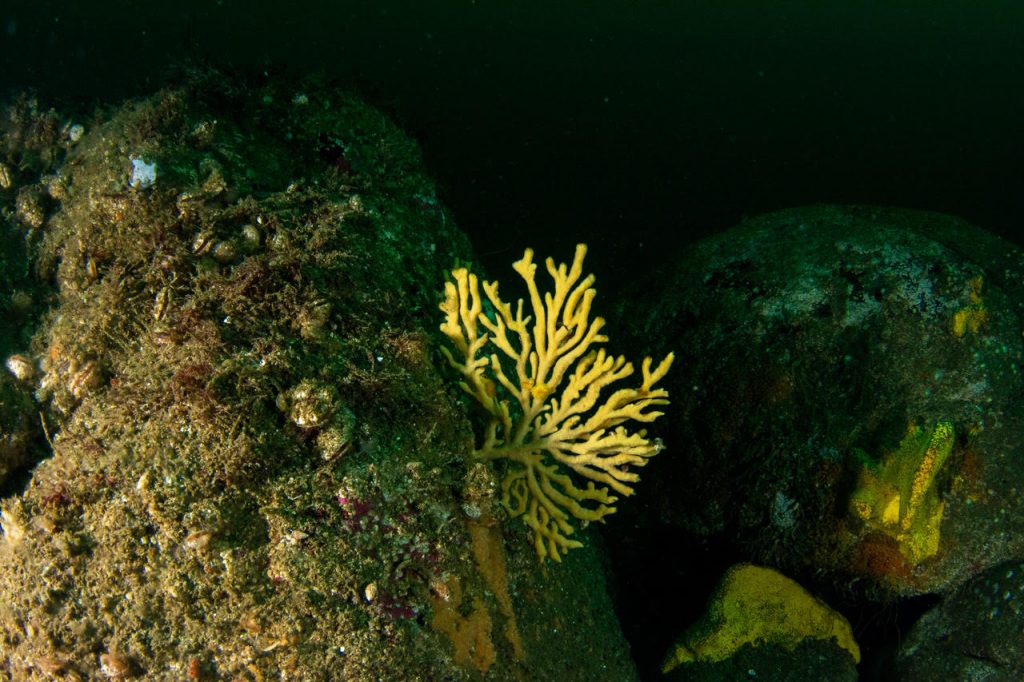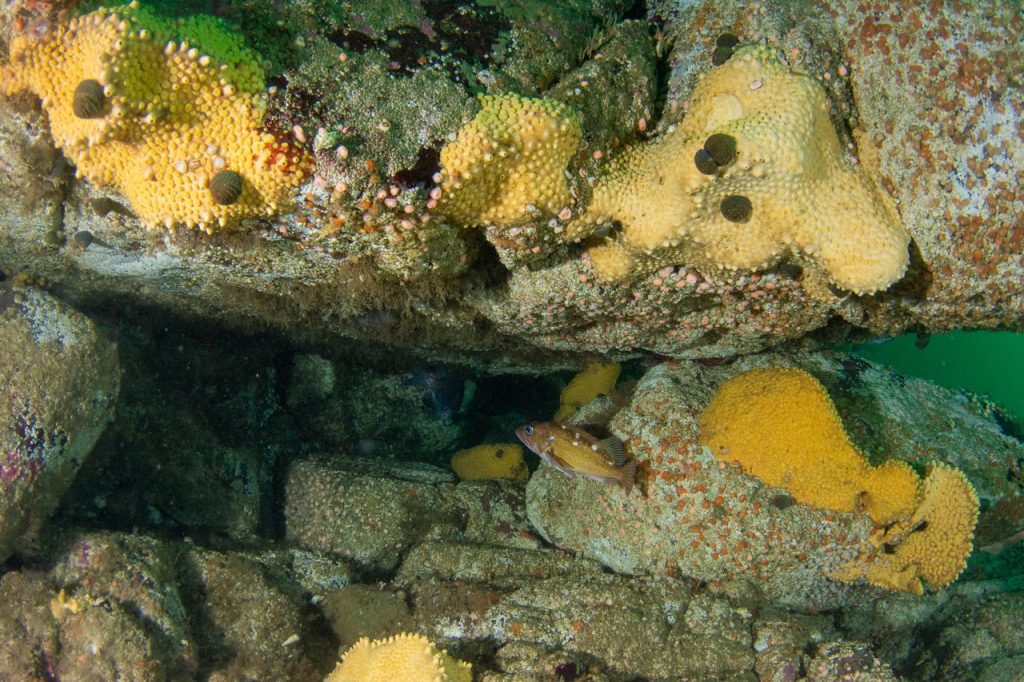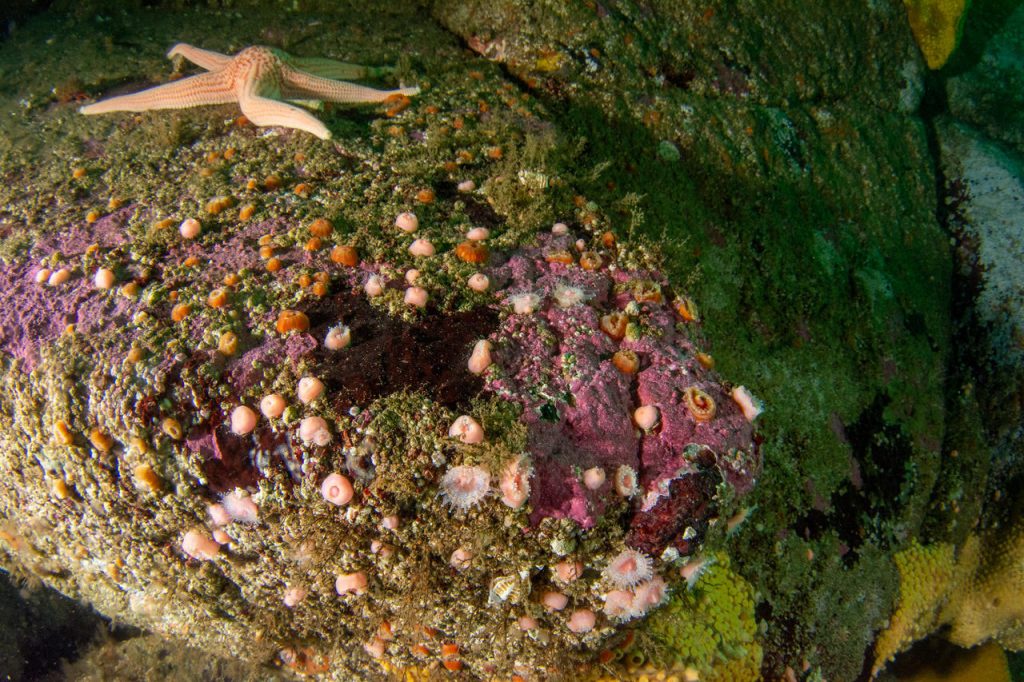
NUTME begins with first exploration campaign
On May 6th, researchers and technical divers Alejandro Pérez Matus, Vladimir Garmendia and Rodrigo Alarcón Ireland made the first dive of the research project on temperate mesophotic reefs. Know the details of this experience here.
The purpose was to explore the reefs off the coast of Las Cruces, El Tabo, in the Region of Valparaiso, using technical diving, to register their location through georeferencing and identify main species and seafloor structure. The idea is to use these reefs as a natural laboratory for future expeditions.
“The exploration site was about 3 kilometers away from the coast. The first maneuver was to lower the BRUV camera (Baited Remote Underwater Video)”, says Rodrigo Ireland, specialist in this technology, which consists of a recording system mounted on a metal structure and a bait to attract fish or other organisms to the field of view of the camera. "The device took records for 2 hours at a depth of 30 m, which will serve to examine the abundance, sizes and diversity of fish species that inhabit these reefs."

Then the three divers prepared to go down and see the site themselves. Through their diving masks, they were able to identify an unexplored place, a sunken rock 35 meters depth surrounded by shoals of fish, rare mollusks and an impressive topography.
"It was a very good experience, at first glance these environments show a different community from those at shallower reefs (<20m depth), which are dominated by kelp", explains Vladimir Garmendia. “In the reefs that we explored up to 35 m deep, the diversity of organisms does not cease to impress. We saw a large number of sessile animals that form colonies on rocks, such as sponges, corals, and anemones. Many rock fish such as the Patagonian Rockfish (Sebastes oculatus) approached our BRUV camera. At one moment, hundreds of Cabinza grunt (Isacia conceptionis) were surrounding us during the dive. It was impressive".
Due to the great depth, the diving time was limited, so the researchers were able to spend 20 minutes exploring the place and recording videos and photographs. Then, they went back to the boat to exchange opinions and details of the experience and decided to do a second dive near the place, which was also as impressive as the first dive.
“We entered a crevasse that began at a depth of 30 meters. The sight was lost in absolute darkness, which left us with the desire of exploring beyond what our eyes could reach”, says Rodrigo Alarcón Ireland.
Vladimir concludes: "We will return to these reefs soon to test more methods and find out how related they are to each other."

Photography: Alejandro Pérez Matus